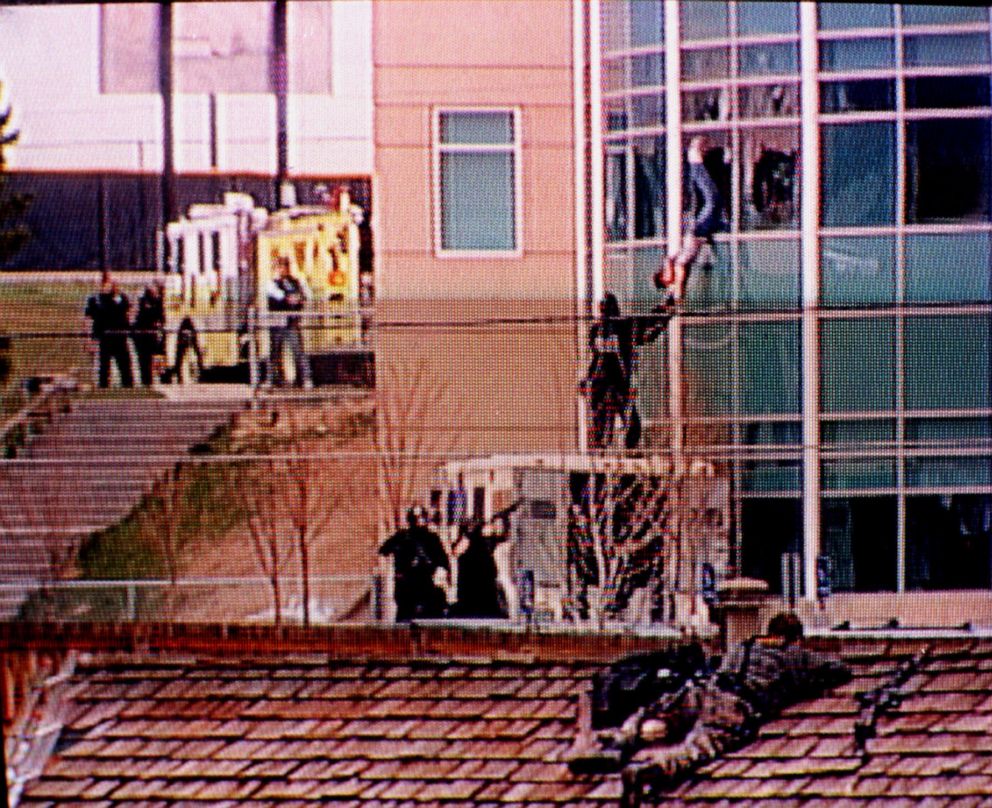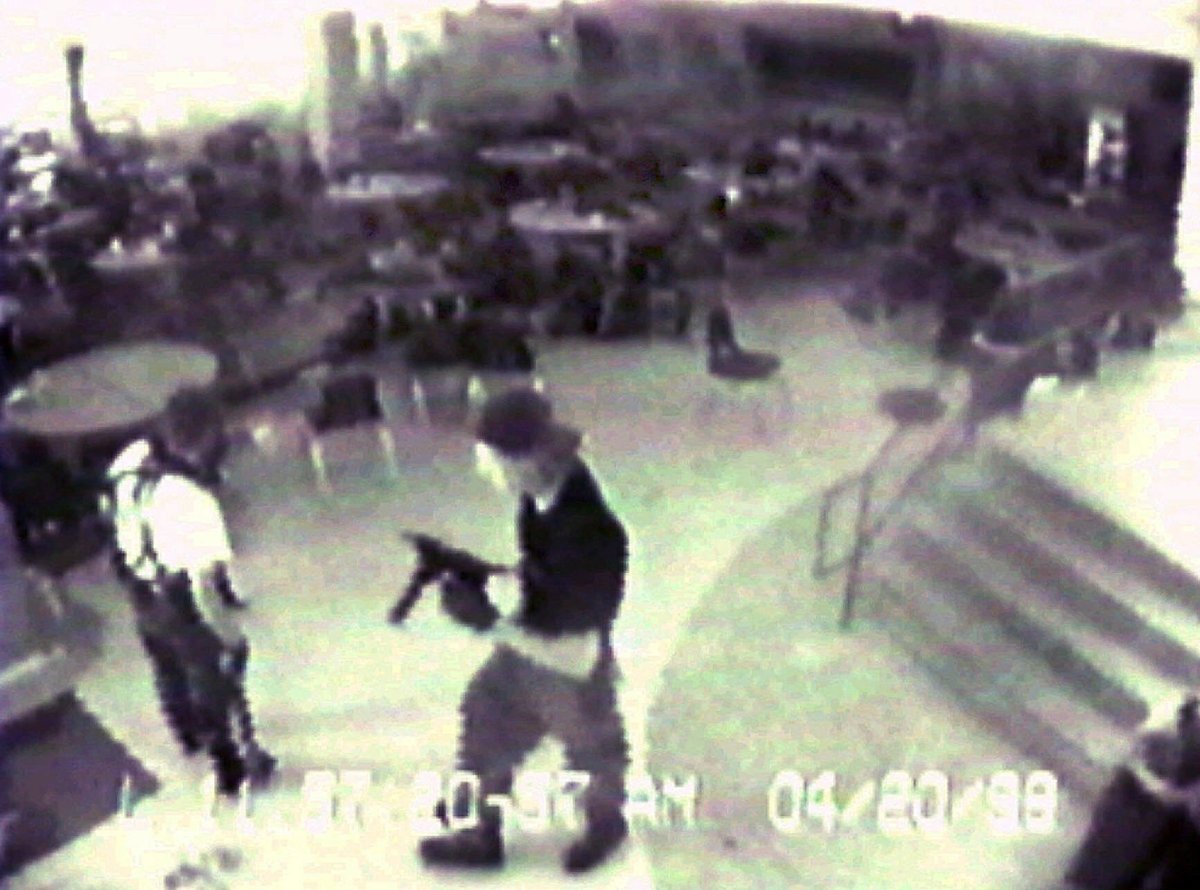Could a single day in April forever alter the landscape of American adolescence and the perception of safety within its schools? The Columbine High School massacre, a horrific event that unfolded on April 20, 1999, continues to cast a long shadow, prompting ongoing scrutiny, debate, and a relentless quest for understanding.
The events of that fateful Tuesday in Littleton, Colorado, remain etched in the collective memory. Two teenage gunmen, Eric Harris and Dylan Klebold, armed with an arsenal of weapons, stormed Columbine High School. Their rampage resulted in the deaths of twelve students and one teacher, and left two dozen others wounded. The tragedy, shocking in its brutality and the youth of its perpetrators, served as a grim harbinger of the rising tide of school shootings in the United States. The subsequent suicides of Harris and Klebold marked the devastating conclusion to a day that would redefine the concept of school security and fuel a national conversation on gun control, mental health, and the societal factors contributing to such acts of violence.
The impact of the Columbine shooting extended far beyond the physical boundaries of the high school. The event spurred intensive investigations, comprehensive reviews of school safety protocols, and an outpouring of grief and anger. The media coverage was relentless, with images and reports circulating globally, amplifying the sense of shock and horror. The families of the victims and survivors were thrust into the public eye, grappling with unimaginable pain and struggling to find meaning in the senseless loss of life.
- Christopher Lloyds Wives Lisa Loiacono Marriages Age Difference More
- Exploring The Way Of The Gun Geoffrey Lewis Legacy
The Columbine shooting forced America to confront uncomfortable truths about itself. It raised critical questions about the availability of firearms, the role of violent media, the prevalence of bullying and social isolation, and the importance of mental health support for young people. The event also highlighted the failures of communication and the challenges faced by law enforcement in responding to an active shooter situation. The legacy of Columbine includes not just the lives lost but also the ongoing efforts to prevent similar tragedies, including increased security measures, improved mental health resources, and a more robust dialogue on violence prevention.
The aftermath also brought about a wave of memorialization and healing. The community rallied together to support the victims' families and to rebuild their lives. Memorials were erected, support groups were formed, and countless acts of kindness and compassion were displayed. The story of Columbine, however, is not just a tale of destruction but also a testament to the resilience of the human spirit and the enduring power of hope.
| Name | Role | Key Information |
|---|---|---|
| Eric Harris | Perpetrator | One of the two shooters responsible for the Columbine High School massacre. |
| Dylan Klebold | Perpetrator | The other shooter involved in the Columbine massacre. |
| Rachel Scott | Victim | One of the first students killed in the shooting. Her faith and kindness became a symbol of hope and resilience. |
| Dave Sanders | Teacher | A teacher at Columbine High School who died while trying to protect students. |
| Brooks Brown | Student, Friend of Eric Harris | A classmate who was a friend of Eric Harris and was coincidentally sent home by Harris shortly before the shooting began. |
| Randy Brown | Parent of Brooks Brown | Father of Brooks Brown who was outspoken in his belief that the Sheriff's Department was covering up facts of the case. |
The investigation into the Columbine shooting was extensive, with authorities examining every aspect of the events leading up to the tragedy. Evidence gathered included the weapons used, the planning documents of Harris and Klebold, and the various interactions they had with others in the months and years prior to the attack. The evidence was examined to understand the shooters' motives, their mental states, and how they were able to acquire the weapons they used. The investigation sought to reconstruct the events of the day and determine what could have been done to prevent the tragedy.
One of the critical areas of investigation was the background and behaviors of the shooters, Eric Harris and Dylan Klebold. Investigators delved into their lives, seeking to understand the factors that led them to commit such a heinous act. This included an examination of their family lives, social interactions, academic performance, and online activities. The discovery of the extensive planning by the perpetrators further complicated matters, as their preparations revealed a premeditated attack.
The aftermath of the Columbine shooting saw a significant impact on school safety. Schools across the United States and around the world began to reassess their security protocols and safety measures. This involved enhanced security personnel, metal detectors, surveillance cameras, and active shooter drills. The aim of these changes was to make schools safer and more secure. The Columbine shooting spurred a movement to promote school safety.
The event also led to changes in gun control laws. The shooting prompted renewed debates about gun control legislation, focusing on the availability of firearms, background checks, and the types of weapons that should be allowed. The legislative changes included efforts to restrict access to high-capacity magazines and assault weapons. The Columbine tragedy was a watershed moment in the gun control debate.
The legacy of Columbine is complex and multifaceted. It includes a deep sense of loss, the enduring pain of the survivors and the families of the victims, and the ongoing efforts to prevent similar tragedies. There have been many attempts to understand the psychological factors that led Harris and Klebold to commit such an act. This has included examination of their social interactions, their mental health, and their access to weapons and violent media.
The use of crime scene photos and images of the deceased, particularly those of Harris and Klebold, is a contentious issue. The dissemination of such images raises ethical questions about privacy, exploitation, and the potential for causing further pain to the families of the victims. Conversely, some argue that these images provide a stark and undeniable record of the tragedy, serving as a reminder of the devastation caused by the shooting. The debate over these images reflects the broader struggles with how to approach the event.
The Columbine shooting sparked intense media coverage, including the gathering of crime scene photos, that has had lasting effects. Images from the scene, some of which were graphic, were widely circulated. The media played a crucial role in shaping public perception of the event and its significance. The media coverage, though providing vital information, also drew criticism for potentially sensationalizing the event and causing further distress to those affected.
The event also generated debate over the role of violent media in the shooting. The shooters were known to have been influenced by violent video games, films, and music. This led to an examination of the effects of such media on young people, with some arguing that it desensitizes them to violence and may contribute to violent behavior. This has resulted in calls for stricter regulations.
The importance of mental health awareness also took center stage. After the Columbine shooting, there was an increased focus on mental health resources for young people. The shooting highlighted the need to identify and support individuals who may be struggling with mental health issues. The creation of programs aimed at identifying and supporting individuals at risk has become a major initiative.
In the aftermath, the community of Littleton, Colorado, demonstrated remarkable resilience and a strong desire to heal. The local community came together to support the families of the victims, provide counseling services, and create memorials to honor those who were lost. The community's response has helped to promote healing and create a sense of unity.
The Columbine shooting also fueled discussions about the dangers of bullying, social isolation, and online interactions. Harris and Klebold were known to have experienced bullying and social alienation. This brought awareness to the impact of these factors on young people. The Columbine tragedy underscores the importance of creating supportive, inclusive school environments.
The Columbine High School massacre remains a subject of intense study and discussion, with various perspectives and narratives. One significant aspect is the availability of evidence and archives related to the shooting. This includes a wealth of information such as reports, maps, and even the basement tapes. The goal of these archives is to provide insight into the events surrounding the Columbine shooting and to promote informed discussions.
The event has led to important legal and policy changes. The shooting sparked debates regarding gun control, mental health resources, and school safety. These discussions resulted in significant policy changes, including improvements in school security, more stringent background checks, and an increase in mental health support services. These changes aimed to prevent similar tragedies.
The investigation also focused on the weapons and materials used by Harris and Klebold. The shooters used a variety of weapons, including shotguns and high-capacity magazines, which amplified the level of destruction. The use of these weapons also highlighted the need for regulations and the prevention of unauthorized acquisition of firearms.
The media coverage of the Columbine shooting was extensive, resulting in a wide range of images and accounts. News reports, photographs, and documentaries provided information about the events, including the actions of the shooters and the responses from students, teachers, and law enforcement officers. The coverage served to inform the public but also raised questions about ethical considerations. The media's role in portraying the event continues to be discussed.
The concept of active shooter drills has become a part of school safety protocols. These drills are intended to prepare students and staff to respond to a shooting. They teach basic procedures to secure classrooms, evacuate the premises, and respond to potential threats. These measures reflect the changes made as a result of the shooting.
The Columbine shooting spurred a wave of memorialization and healing. There are monuments and tributes to honor the victims. Community members established memorials, support groups, and healing practices. The community's efforts help to address the grief and loss associated with the shooting.
One of the ongoing challenges is the spread of misinformation and conspiracy theories. These theories often involve unfounded claims about the events, the motives of the shooters, and the actions of the authorities. It is important to verify information and to rely on credible sources to avoid spreading falsehoods about the event.
The Columbine shooting continues to be a topic of interest. The events of April 20, 1999, and the lives lost that day, are still remembered, and the need for more study on the event is still relevant today.
The aftermath of the Columbine shooting continues to influence how society addresses violence. The events of that day have led to significant changes in school security, mental health services, and gun control regulations. The lessons from Columbine remain relevant in the effort to prevent future tragedies.
In conclusion, the Columbine High School shooting stands as a defining moment in modern American history. The events of that day, the lives lost, and the subsequent investigations have left an indelible mark on the nation. The need to understand the roots of the tragedy, address the issues, and implement effective preventative measures remains a priority. The memory of Columbine compels society to strive to prevent future tragedies.
For further and detailed information, you can visit the official website of the Jefferson County Sheriff's Office: Jefferson County Sheriff's Office
- Explore Julie Green Ministries Prophecies Faith Gods Word
- David Sanov Bio Age More The Husband Of Alison Sweeney


